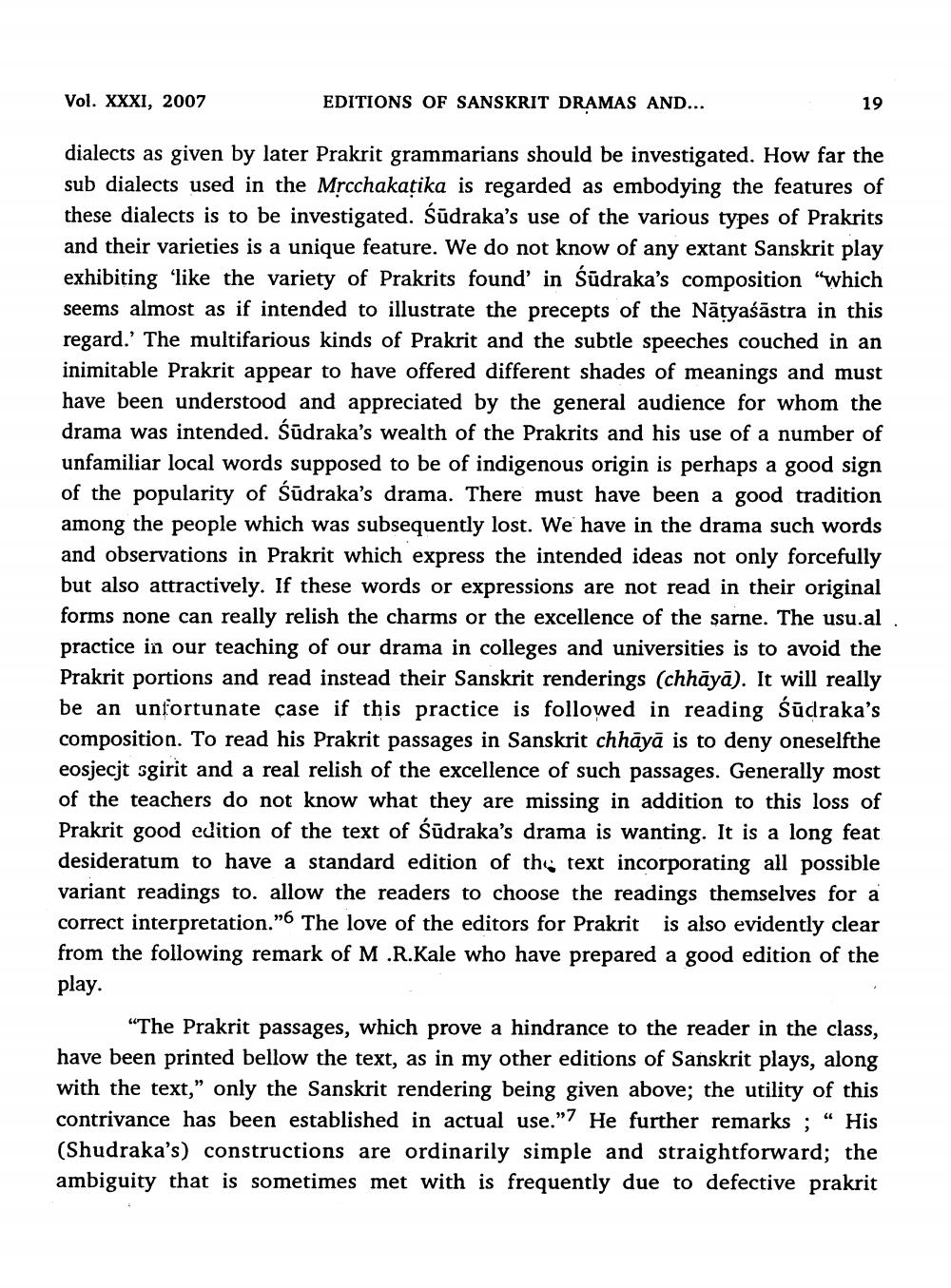________________
Vol. XXXI, 2007
EDITIONS OF SANSKRIT DRAMAS AND...
19
dialects as given by later Prakrit grammarians should be investigated. How far the sub dialects used in the Mrcchakatika is regarded as embodying the features of these dialects is to be investigated. Śūdraka's use of the various types of Prakrits and their varieties is a unique feature. We do not know of any extant Sanskrit play exhibiting like the variety of Prakrits found' in Sūdraka's composition "which seems almost as if intended to illustrate the precepts of the Nātyaśāstra in this regard.' The multifarious kinds of Prakrit and the subtle speeches couched in an inimitable Prakrit appear to have offered different shades of meanings and must have been understood and appreciated by the general audience for whom the drama was intended. Śūdraka's wealth of the Prakrits and his use of a number of unfamiliar local words supposed to be of indigenous origin is perhaps a good sign of the popularity of Sūdraka's drama. There must have been a good trad among the people which was subsequently lost. We have in the drama such v and observations in Prakrit which express the intended ideas not only forcefully but also attractively. If these words or expressions are not read in their original forms none can really relish the charms or the excellence of the sarne. The usu.al practice in our teaching of our drama in colleges and universities is to avoid the Prakrit portions and read instead their Sanskrit renderings (chhāyā). It will really be an unfortunate case if this practice is followed in reading Śūdraka's composition. To read his Prakrit passages in Sanskrit chhāyā is to deny oneselfthe eosjecjt sgirit and a real relish of the excellence of such passages. Generally most of the teachers do not know what they are missing in addition to this loss of Prakrit good edition of the text of Śüdraka's drama is wanting. It is a long feat desideratum to have a standard edition of the text incorporating all possible variant readings to. allow the readers to choose the readings themselves for a correct interpretation.". The love of the editors for Prakrit is also evidently clear from the following remark of M.R.Kale who have prepared a good edition of the play.
"The Prakrit passages, which prove a hindrance to the reader in the class, have been printed bellow the text, as in my other editions of Sanskrit plays, along with the text,” only the Sanskrit rendering being given above; the utility of this contrivance has been established in actual use."7 He further remarks ; “ His (Shudraka's) constructions are ordinarily simple and straightforward; the ambiguity that is sometimes met with is frequently due to defective prakrit




